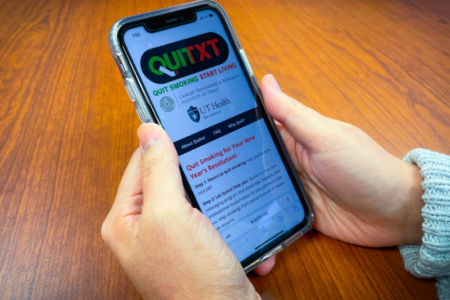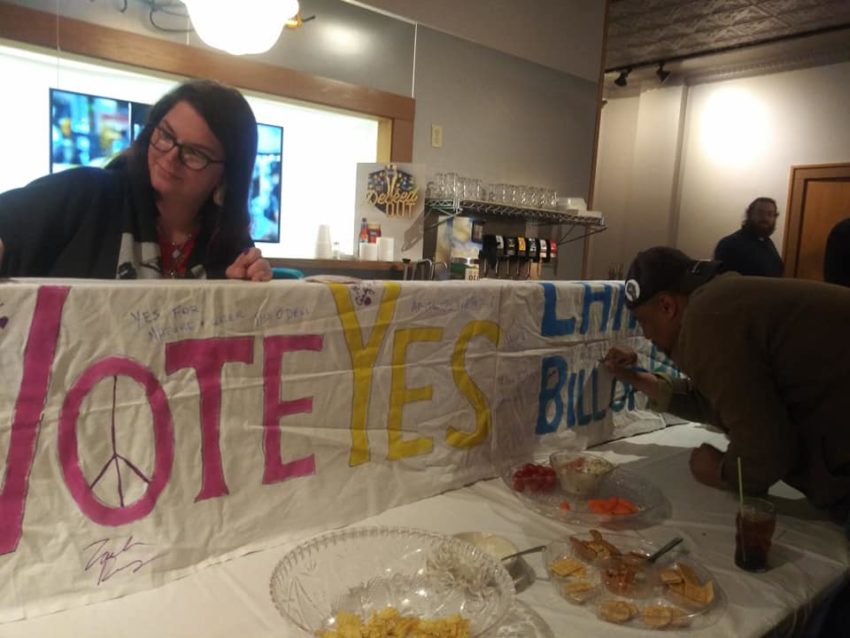
Share On Social!
Crystal Jankowski ran the faucet in her hospital room for 12 hours straight the day she gave birth — all in hopes that the tap water would come out clean for Amelia, her newborn girl.
Just days before her delivery in August 2014, the city of Toledo, Ohio (8.3% Latino) told residents not to drink the municipal water. High levels of health-threatening toxins contaminated the public water supply sourced from Lake Erie.
Jankowski, a Toledo-native, wanted to do something for her two children and all kids.
So, she became an organizer for Toledoans for Safe Water (TSW), a group with an idea for a controversial Lake Erie Bill of Rights to enable residents to sue lake polluters.
“When you fight for clean water you are fighting for people of the reservations, you’re fighting for families on military bases, you’re fighting for Flint and Toledo, you’re fighting for animals, and for the world around you,” Jankowski said. “Fighting for a healthy environment is one of the things that helps the most people.”
Contamination Spreads in Erie
The problem in Lake Erie started with microcystis aeruginosa.
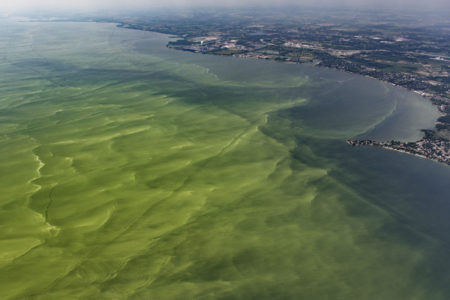
This alga blooms in the water and can cause external rashes and internal liver problems when consumed by humans and animals. It is found throughout the lake seasonally.
But this periodic issue turned into a regional crisis, researchers believe, when nitrogen and phosphorus runoff from agricultural fertilizers strengthened the worst microcystis aeruginosa bloom in recent history in 2014, according to The Hill.
Agricultural tilling allows farmers to turn the soil, kill weeds, and integrate manure into crops. It also causes dirt erosion that can lead to contaminated chemicals entering streams.
Three years earlier, another significant strain of contamination ran through the lake due to soil contamination runoff, according to NASA.
Contaminated water doesn’t affect a few people; it affects entire communities, Jankowski said.
“I have a story from the water crisis. So does he, so does she, and so do they. Everybody in Toledo has a story,” Jankowski said. “This is a movement for the people and by the people.”
The Toledo Water Crisis
The microcystis contamination resulted in Toledo residents relying on public resources and charity to access drinkable water for more than two days in August 2014.
Citizens lined up to get and buy water bottles. However, supplies didn’t last long.
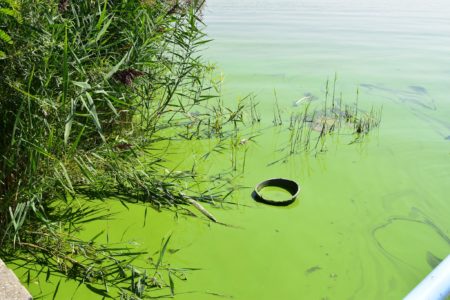
When a water ban went into effect, Jankowski was days past her delivery due date. She became aware of the crisis through an anxious 5 a.m. phone call from her mother, urging Jankowski not to touch the water.
“I woke up that morning realizing I was a part of that group of individuals who is at the highest risk,” Jankowski said.
She recounts having to drive 45 minutes south of Toledo to a friend’s home, who was outside of the contamination radius, to fill up coolers and bottles with clean water.
Then, Jankowski went into labor; during that time, the Mayor of Toledo declared the water would be safe once plumbing systems were flushed and cycled through.
She said the worst part was fearing for her and daughter’s safety.
“I didn’t want to eat the ice chips because I was paranoid,” Jankowski said. “I didn’t want to breastfeed because what if they didn’t call [the ban] in time…and now it was in my system? I was terrified. I have this newborn little baby, and I don’t think I can let her touch the water.”
Taking Action for Safe Water
As more information became available to the public, concerned citizens like Jankowski began to speak up and act in this issue.
During a 2016 Urban Agriculture Alliance of Lucas County meeting, Jankowski was approached about joining TSW as an organizer. She called it an opportunity to make sure other Toledo mothers didn’t have to fear for their children’s safety.
The group began working toward passing the Lake Erie Bill of Rights. The measure would allow residents to file “Rights of Nature” lawsuits against those polluting in the lake.
Jankowski and TSW worked with and in the community to gain public support for their clean water initiative.
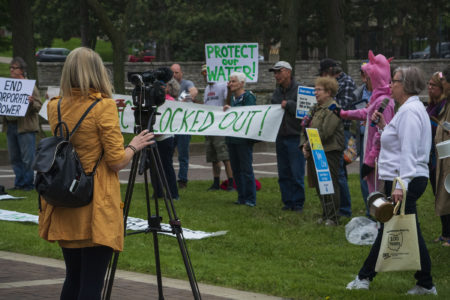
“We were all constantly going out, introducing ourselves to people in the community, meeting community members, advocating for ‘Rights of Nature,’ collecting petitions, standing outside of every place you can think of, and getting kicked out of every place you can think of,” Jankowski said.
One of Jankowski’s focus areas was online outreach. Initiatives like live-streams, social media engagement, and digital updates allowed people from all backgrounds to become involved without physical participation.
“Online information sharing is super important for those who aren’t capable of making every meeting or making every event,” Jankowski said. “You want them to feel part of it, even if they can’t be there. Because of the online presence, we had a lot more people who were willing to advocate for us.”
Jankowski, who is an unpaid volunteer, and TSW’s work helped in passing the Lake Erie Bill of Rights in February, 2019.
The bill, approved through a city-wide special election with 61% voting yes, amended Toledo’s charter. It also gives citizens the ability to identify and sue heavy polluters to stop further water contamination, according to CityLab.
Despite election success, the measure has been controversial. The Lucas County (7.1% Latino) board of elections, Toledo’s county officials, blocked the original vote in November, 2018.
Impacts on business and agriculture, as well as high costs involved in litigation, are the primary sources of apprehension from farmers and politicians who oppose the measure.
Since its implementation, The Ohio Farm Bureau Federation announced their support for legal action against the Lake Erie Bill of Rights.
Greater Goals Ahead
While one lake has greater protections, the fight is far from over Jankowski said.
“I’m still grateful for the opportunity to do this,” she said. “Every interview I do I still remind people that Flint still doesn’t have clean water. There are hundreds of thousands of other people who need that energy and need somebody to help them get started. They know what they want to do, but do not know how to do it.”
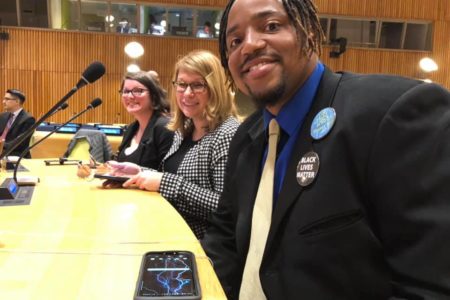
Clean water justice issues are impacting communities across the nation.
The Environmental Working Group’s recently published report illustrates the problem. Researchers found that almost every U.S. state contains sites of per- and polyfluoroalkyl chemical contamination — impacting an estimated 19 million Americans.
Moreover, schools across the country contain toxic lead contamination in their drinking water.
For Jankowski, equitable water access leads to a healthy, full life. She said that’s why countless hours are spent fighting for that possibility.
“You can’t live in a world where you are just trying to save it for yourself,” Jankowski said. “When I was a kid, I could swim in the lake — I can’t put my son in the Maumee River anymore, it’s so polluted. So, he’s already missed out on something that meant so much to me and my childhood. If I could do something today to make his adulthood and his possible children live in a better world, I’m going to.
“There is a quote, ‘the true meaning of life is to plant trees, under whose shade you do not expect to sit.’ The seed I’m planting now, I’m never going to see it come to fruition. My children will. That’s what I hold on to.”
Editor’s Note: This article is part of a collaboration between Salud America! and the Hoffman Toxicant-Induced Loss of Tolerance (TILT) program at UT Health- San Antonio. To find out if you are TILTed due to exposure to everyday foods, chemicals, or drugs, take a self-assessment or learn more about TILT.
By The Numbers
1
Quick Survey
Can help you find out how chemically sensitive you are
This success story was produced by Salud America! with support from the Robert Wood Johnson Foundation.
The stories are intended for educational and informative purposes. References to specific policymakers, individuals, schools, policies, or companies have been included solely to advance these purposes and do not constitute an endorsement, sponsorship, or recommendation. Stories are based on and told by real community members and are the opinions and views of the individuals whose stories are told. Organization and activities described were not supported by Salud America! or the Robert Wood Johnson Foundation and do not necessarily represent the views of Salud America! or the Robert Wood Johnson Foundation.



